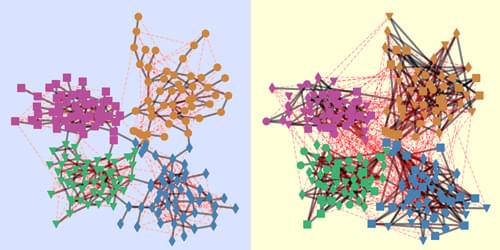Full Video of the NeuroTechnolgy Center at Columbia University’s Optogenetics 2020 WebinarQ&A Transcript: tinyurl.com/yajfeozsTable of Contents:00:00:00 — In…
Get the latest international news and world events from around the world.



Peter Gabriel — I have the touch
Scenes of a movie based on a story written by George Lucas.
Peter Gabriel song “I Have The Touch” and the video is from the movie THX-1138. This was edited back in 1990.

Looking At CRISPR Therapeutics’s Recent Unusual Options Activity
Deep-pocketed investors have adopted a bearish approach towards CRISPR Therapeutics CRSP, and it’s something market players shouldn’t ignore. Our tracking of public options records at Benzinga unveiled this significant move today. The identity of these investors remains unknown, but such a substantial move in CRSP usually suggests something big is about to happen.
We gleaned this information from our observations today when Benzinga’s options scanner highlighted 11 extraordinary options activities for CRISPR Therapeutics. This level of activity is out of the ordinary.
The general mood among these heavyweight investors is divided, with 45% leaning bullish and 54% bearish. Among these notable options, 2 are puts, totaling $98,000, and 9 are calls, amounting to $744,659.

Conger ice shelf has collapsed: what you need to know, according to experts
East Antarctica’s Conger ice shelf – a floating platform the size of Rome – broke off the continent on March 15, 2022. Since the beginning of satellite observations in the 1970s, the tip of the shelf had been disintegrating into icebergs in a series of what glaciologists call calving events.
Conger was already reduced to a 50km-long and 20km-wide strip attached to Antarctica’s vast continental ice sheet at one end and the ice-covered Bowman Island at the other. Two calving events on March 5 and 7 reduced it further, detaching it from Bowman and precipitating its final collapse a week later.
The world’s largest ice shelves fringe Antarctica, extending its ice sheet into the frigid Southern Ocean. Smaller ice shelves are found where continental ice meets the sea in Greenland, northern Canada and the Russian Arctic. By restraining how much the grounded ice flows upstream, they can control the loss of ice from the interior of the sheet into the ocean. When an ice shelf like Conger is lost, the grounded ice once kept behind the shelf may start to flow faster as the restraining force of the ice shelf is lost, resulting in more ice tumbling into the ocean.

Turning up the Volume of Pouring Water
Experiments performed by psychologists indicate that many people can tell whether their tea is hot or cold by listening to it being poured into a mug. Pouring sounds can also contain other information about a liquid—a connection that has been thoroughly investigated for natural fluids, ranging from rain drops to ocean waves. Now Ho-Young Kim from Seoul National University, South Korea, and colleagues have studied an artificial system—a fluid jet hitting a liquid bath—revealing that the volume of the sound that is produced depends on the jet’s shape prior to impact [1]. The results indicate that sound could be used as a noninvasive probe of oxygen levels in bodies of water, says Kim.
The researchers sent a few-millimeters-diameter jet of water down a nozzle that hung above a 10-cm-diameter water-filled cylinder. Using an underwater microphone they recorded the amplitude of the sounds produced when the jet hit the surface as a function of the nozzle’s height. Using a camera, they monitored the pattern of bubbles that formed in the cylinder after jet impact and the outline of the jet, which for sufficiently high nozzles broke up into a train of droplets prior to hitting the water surface.
The team found that as the jet developed more ripples and then broke into droplets, it produced louder sounds—a consequence of the trapping of more air bubbles in the water bath. The result implies that, since thin jets break up more easily than thick ones, thin jets should splash more loudly for a given pouring height. Trying to silently serve tea by carefully pouring a thin stream of liquid may thus be unsuccessful, says Kim.

Atmospheric Neutrinos Revisited
The combined analysis of present and upcoming atmospheric-neutrino experiments may lead to the solution of outstanding puzzles in neutrino physics.
Neutrinos are fickle. Produced with a certain leptonic flavor (electron, muon, or tau), neutrinos can change their flavor as they travel through space. In 1998, researchers discovered this beyond-standard-model neutrino-oscillation phenomenon using neutrinos from natural sources—Earth’s atmosphere and the Sun. Increasingly accurate experiments also involved artificial neutrino sources such as accelerators and nuclear reactors. These experiments have significantly advanced our understanding of neutrino oscillations but haven’t yet solved two important related questions regarding the ordering of neutrino masses and possible violations by neutrinos of a fundamental symmetry known as charge-parity (CP) symmetry. New work by Carlos Alberto Argüelles-Delgado of Harvard University and colleagues shows that atmospheric neutrino experiments, once pivotal in the discovery of neutrino oscillation, can still play a key role in answering those questions [1].
